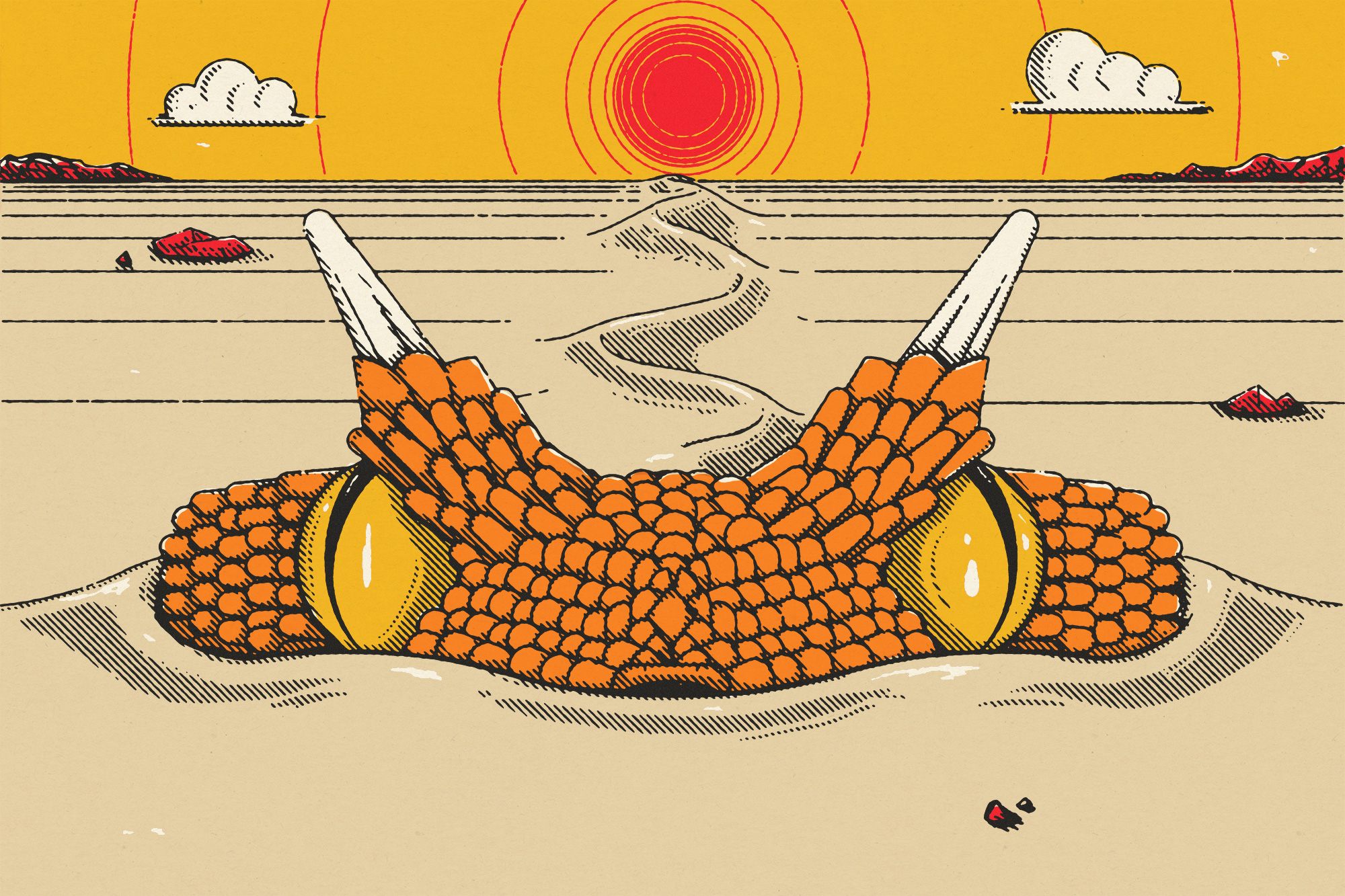The Horned Viper That Buries Itself Up to Its Eyeballs
Meet the most metal of the North African snakes.

How do animals survive in harsh environments? This week, we’re celebrating some extreme desert-dwellers. Previously: the worm lizard that beats the heat by never coming to the surface, the beetles that capture the fog in the Namib, and the penguins of Antarctica’s cold deserts.
As you might expect, the horned desert viper, or Cerastes cerastes, has two little “horns” shooting up out of its head. When it buries most of its body in the desert sand across North Africa and portions of the Middle East, those sharp-looking nubs and the piercing eyes below them are all that you can see.
That’s either thrilling or terrifying, depending on who you ask, and how close to the snake you happen to be. The snakes are venomous, which isn’t great news for you if it’s threatened, lashes out, and sinks its teeth in. From the comfortable distance of YouTube, though, commenters have lovingly likened the snake’s visage to a demon, a dragon, and “cute little horned Satan.”
It’s easy to see why, but the snakes’ posture isn’t designed to freak you out—it’s a way of adapting to the heat and sun. Burrowing in the sand allows the snake to avoid the onslaught of the light. Since its sandy coloring looks a whole lot like sediment, the burrowing also allows the snake to prepare to pounce on unsuspecting rodents, lizards, and other prey, which are none the wiser.
Our horned pal also stays cool while on the move. The snake travels across the desert by way of sidewinding, or coiling part of its body into a loop and propelling that forward while the rest of it trails. This prevents its whole belly from resting on the scorching sand. In service of staying sufficiently cool, C. cerastes ends up looking totally metal.
















Follow us on Twitter to get the latest on the world's hidden wonders.
Like us on Facebook to get the latest on the world's hidden wonders.
Follow us on Twitter Like us on Facebook